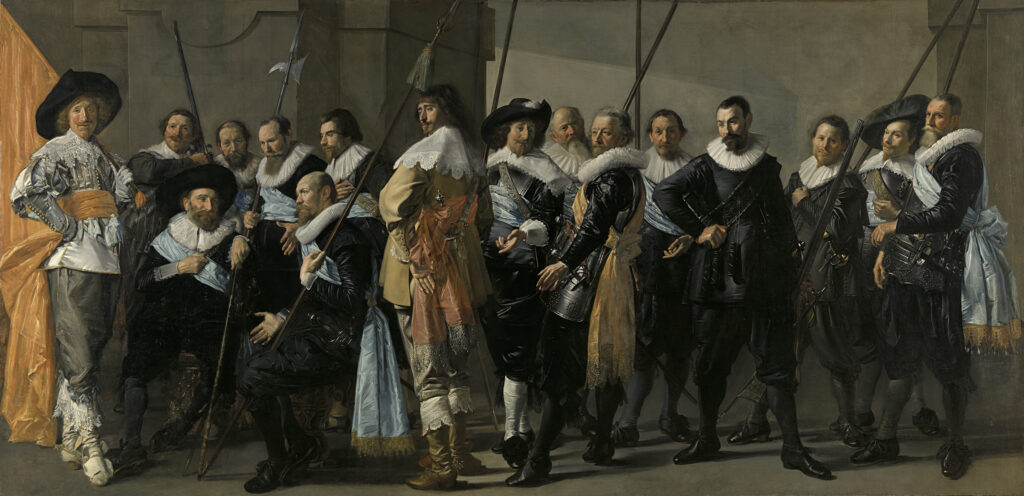The Exhibition
The years 2023 and 2024 are robust for the Rijksmuseum, located in Amsterdam. The large Frans Hals show is being presented right after a major blockbuster Vermeer show, which was fully booked in the first weeks following its opening.
You can read more about the Vermeer exhibition here. The Frans Hals exhibition runs from February 16 – June 9, 2024, and offers the same range of artistic thrills, excellence, and beauty.
Contrary to the Vermeer show, this one does not introduce Hals to the public using a chronological approach that presents his oeuvre from the earliest to the latest works. This time, curators decided to divide Hals’ paintings into thematic categories embellished with concise and imaginative titles:
ROUGH – highlights Hals’ expressive and innovative way of working, heavy brushstrokes, and masterful command of paint in depicting elaborate expressions, fabrics, and surfaces. However, later in the 19th century, his now iconic technique was associated with his fondness for alcohol, a topic often visible in his depictions of the so-called “merry drinkers.”
BREATHE – presents a wide range of popular genres of pendant portraits of married couples, some of which seem so lifelike that they could breathe.
Below are pendant portraits of Michiel de Wael and Cunera van Baersdorp, who married in 1625. Michiel de Wael is depicted numerous times in Hals’ portraits.
BIG – focuses on the power and vitality beaming from his large, life-size portraits of single sitters or famous group portraits of civic guards. Once again, the famous Meagre Company brought this section to Amsterdam.
The Meagre Company, one of Hals’ six militia men pieces, depicts members of the Crossbow Civic Guard from Amsterdam.
LAUGHTER – arguably the most engaging category of the show. Frans Hals is known to be one of the very few painters who depicted laughter. His portraits, in which sitters are laughing, smiling, or showing their teeth, portray all types of curious characters he encountered on the streets of Haarlem. They are often from the margins of the Dutch Golden Age society: fisher children, sex workers, market women, and people with mental disabilities.

























